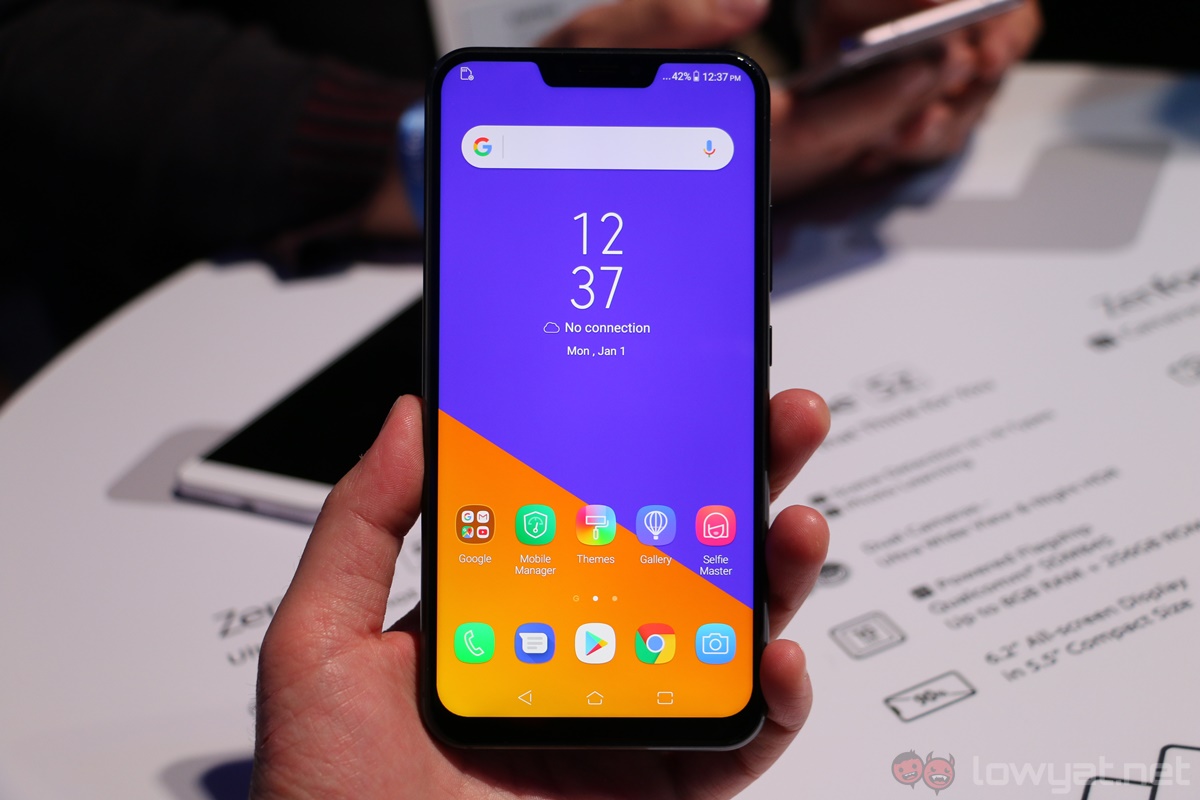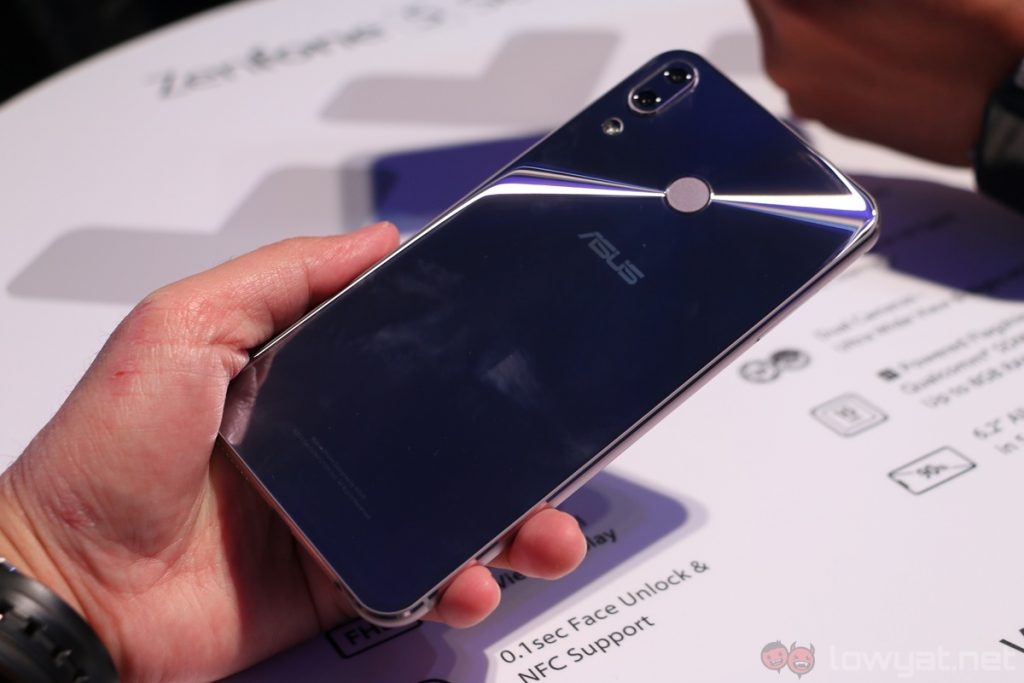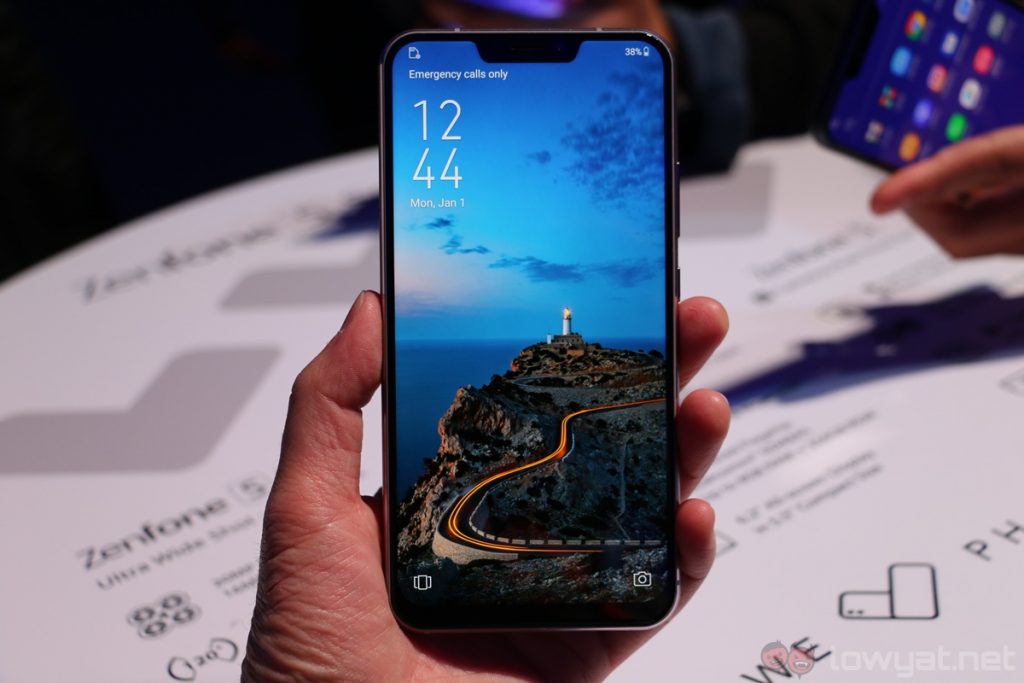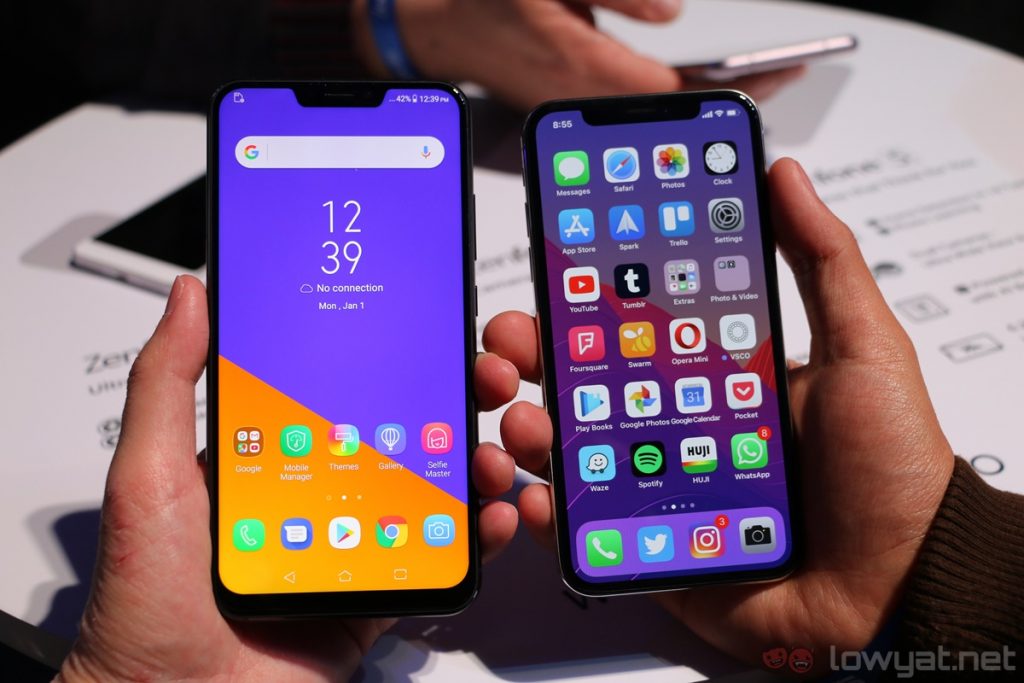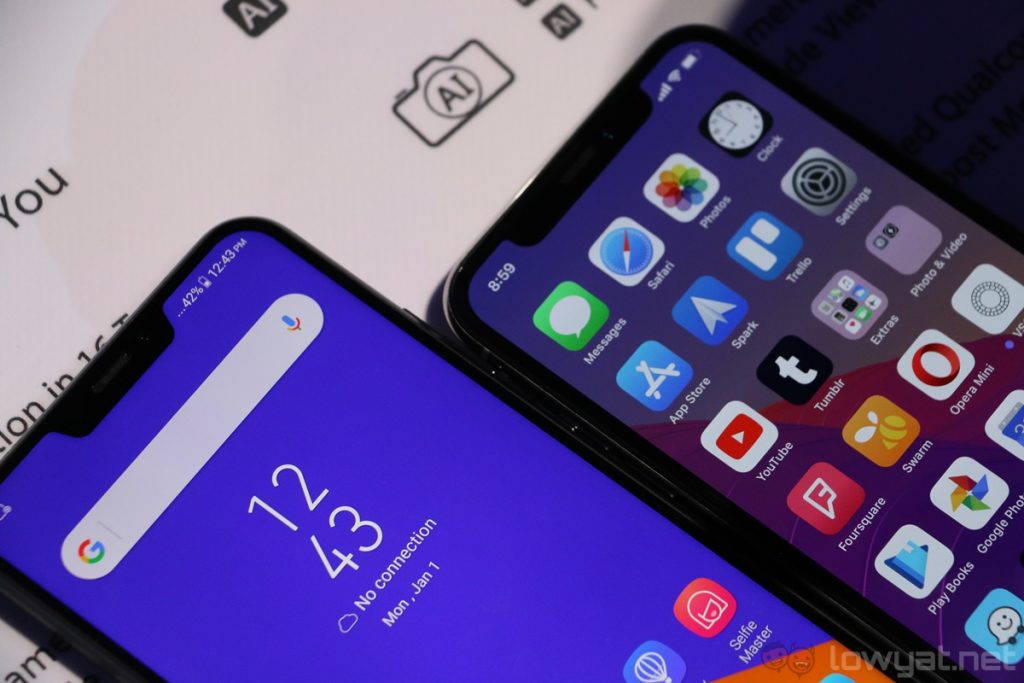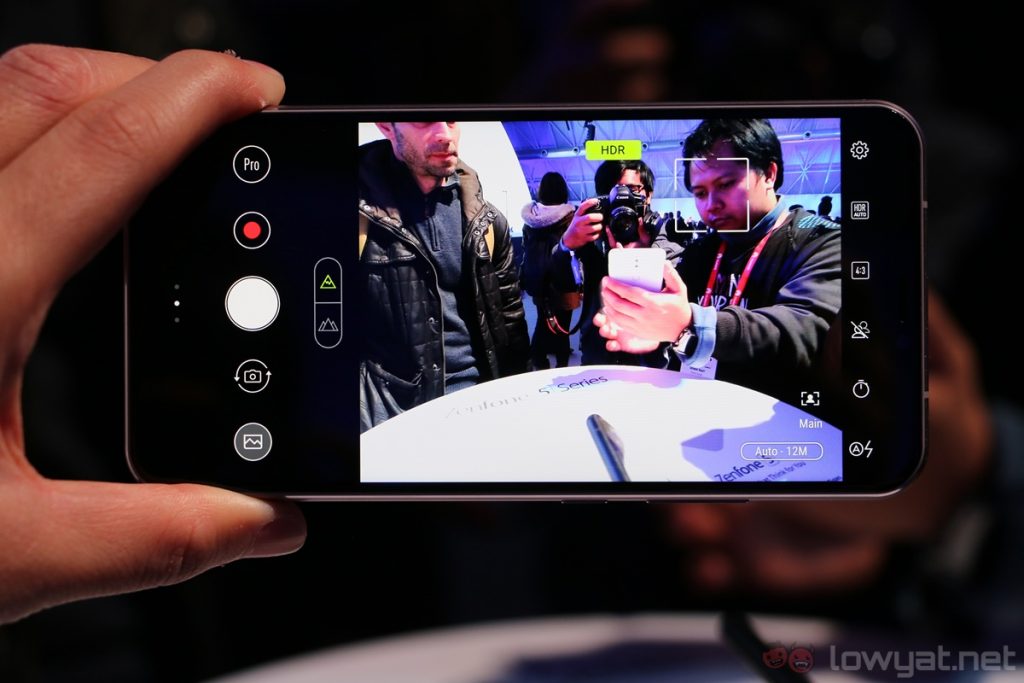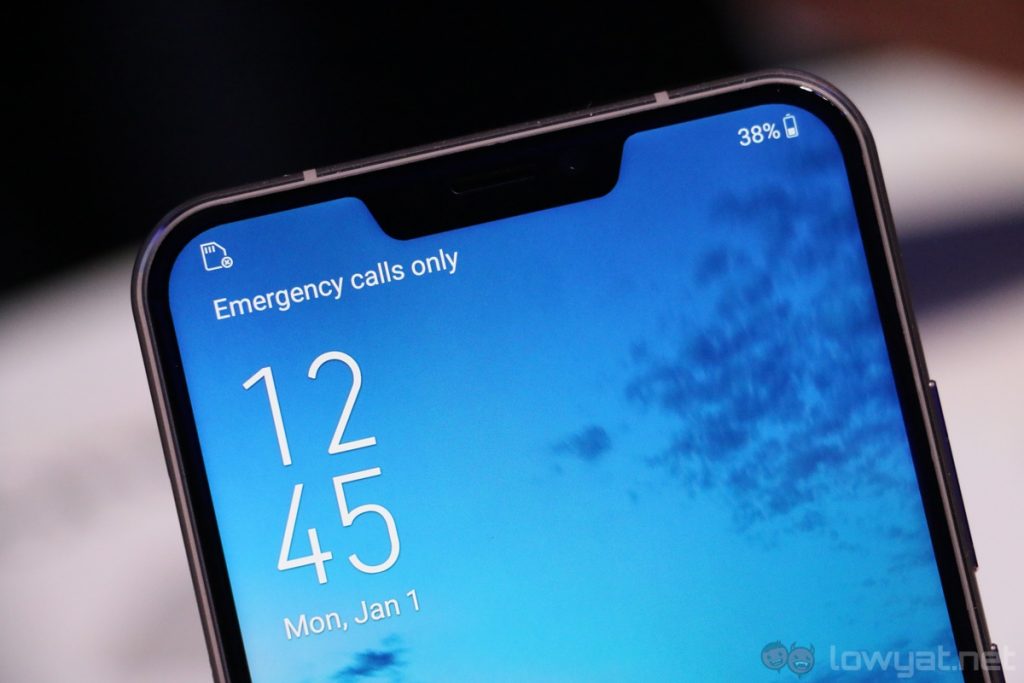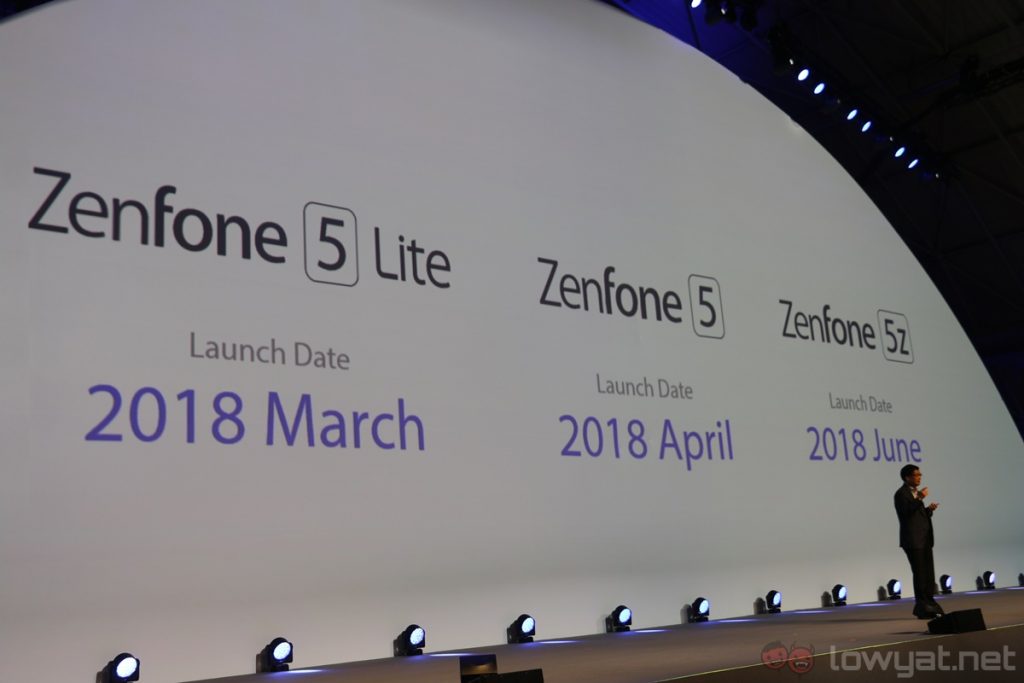Asus has unveiled its new ZenFone 5 series of smartphones at MWC 2018, and yes, it’s clear where the Taiwanese got its inspiration from with these new devices. More specifically, we’re talking about the “notch” found on the ZenFone 5 and ZenFone 5Z.
But looking beyond the design similarity the new phones share with the iPhone X, the 5 and 5Z are actually pretty interesting smartphones – especially in terms of value for money.
The ZenFone 5Z is the flagship smartphone in the series. It has a 6.2-inch 19:9 2246 x 1080 Full HD+ IPS display, a Qualcomm Snapdragon 845 chipset paired with up to 8GB of RAM, up to 256GB of fast UFS 2.1 storage – further expandable with a microSD card – and a 3,300mAh battery. On top of that, it also runs on ZenUI 5.0 based on Android 8.0 Oreo out of the box.
As for the more affordable ZenFone 5, it’s almost a carbon copy of the higher-end 5Z; it just comes with more mid-range hardware. It features a mid-range Snapdragon 636 chipset, up to 6GB of RAM, and storage capacities topping up at 128GB.
In the camera department, both smartphones feature the very same dual-camera system on the back, which are made up of a 12MP f/1.8 primary shooter (complete with optical image stabilisation) and an 8MP f/2.2 120-degree wide-angle camera. Their selfie cameras, on the other hand, are 8MP f/2.0 shooters.
Before we get on to the actual hands on, it’s worth noting that there were no actual units of the ZenFone 5Z at the launch event – the flagship smartphone is only set to be available from June 2018 onwards. Nonetheless, only the chipset, RAM, and storage capacities that differentiate the ZenFone 5Z from the ZenFone 5, so our impressions of the latter should apply to the 5Z as well.
So let’s start with the ZenFone 5’s…familiar display. Yeap, it looks very similar to the iPhone X’s display, right down to the notch at the top of the device. Sure, the ZenFone 5’s notch is slightly smaller in comparison, but there’s no denying where Asus got the inspiration from. In fact, Asus’ global head of marketing, Marcel Campos, told The Verge that “we (Asus) cannot get away from what users want. You have to follow the trends.”
But to Asus’ credit, the ZenFone 5’s display is actually pretty darn impressive. Even though it’s not an OLED display, Asus clearly did some calibration to the phone’s IPS panel. Colours are punchy, viewing angles are good, and it is just really pleasant to look at with the minimal bezels.
Display aside, the ZenFone 5’s Snapdragon 636 chipset seems to be capable too. This, combined with Asus’ new ZenUI 5.0, make for a really polished software experience. The phone didn’t show any performance hiccup when I was opening a number of different apps, and ZenUI 5.0 just feels and looks polished – it’s quite a step up from Asus’ previous versions of Android.
If ZenUI 5.0 already runs so well on the ZenFone 5, I imagine it will run even better on the ZenFone 5Z with its extra processing power and RAM capacity.
Unfortunately, I wasn’t able to put the ZenFone 5’s camera to the test as much as I would’ve liked – the event space was pretty dark, so it wasn’t the most ideal setting to try out the camera. Based on the shots that I did manage to take, however, the camera does show quite a bit of promise. The camera interface did feel sluggish though, which slightly mars the shooting experience.
The Asus ZenFone 5 and 5Z’s design isn’t the most original, but there’s no denying the sheer value for money these smartphones offer – at least, that’s the case with the latter. According to Asus, the 5Z will retail from only $499, which comes up to about RM1,960. Needless to say, this is a pretty attractive price tag for a Snapdragon 845 smartphone.
However, the ZenFone 5Z will only be available from June 2018 onwards; it’s almost a certainty other phone makers will release their own Snapdragon 845 smartphones that could outvalue the 5Z. Even the ZenFone 5 isn’t set to be released until April 2018.
In retrospect, the new ZenFone 5 phones are really Asus’ most exciting phones yet. They’re well-designed – albeit not very original – they look and feel premium, and their software is quite possibly Asus’ most polished version of Android yet.
Follow us on Instagram, Facebook, Twitter or Telegram for more updates and breaking news.


